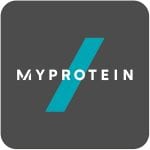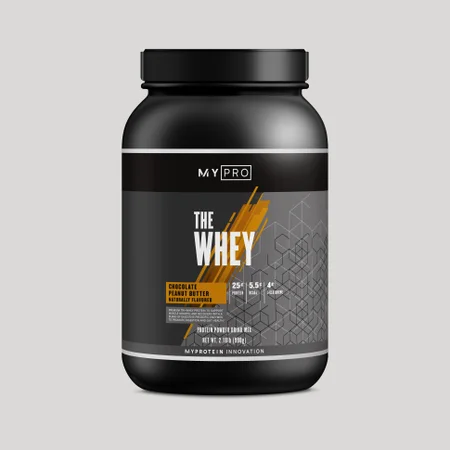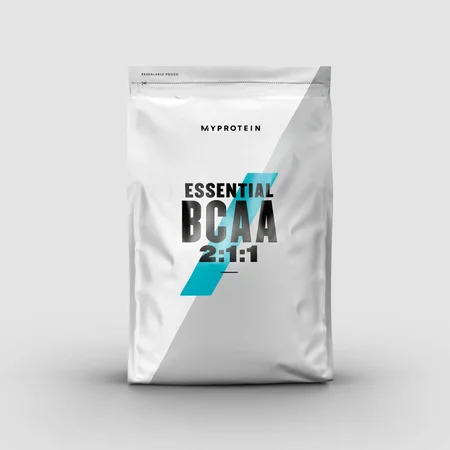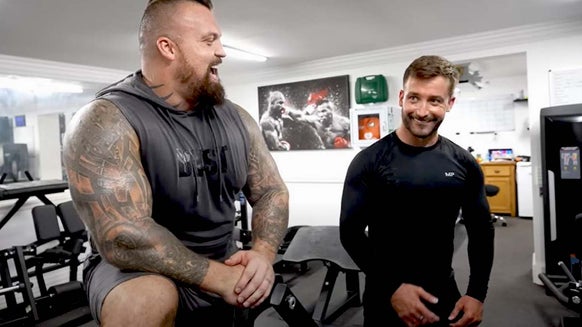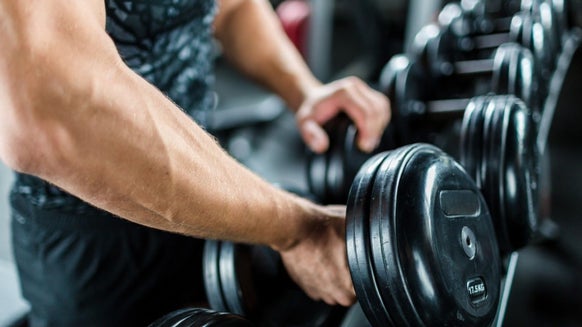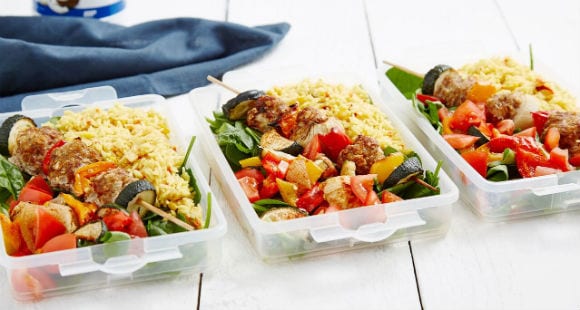
Dieting will always be a big hype topic for the fitness enthusiasts or for anyone who cares about their weight or simply about their general health for that matter. The mass media, including the internet is abundant of mixed information about what to eat, when to eat and how much to eat. All this information can be overwhelming and sometimes confusing because you will often have different sources telling you completely different things.
If you feel what I am saying you are in the right place.
In this article we are going to put dieting in simple and practical steps that you can implement right away in order to achieve your goals, whatever they may be – build more muscle, get leaner or both.
At the end of this post you will be able to design you own personalized meal plan which you can stick to (and actually enjoy), a meal plan what will be optimized for your personal goals and that you can adjust on the fly based on the results it gives you.
That being said, let’s start.
Step 1: Calories in versus calories out
The very first step of setting up a meal plan is figuring out how many calories you need to be eating and setting the number of calories correctly. This is the ground foundation that you need to get right otherwise it will not work.
Gaining or losing weight is determined by the number of calories we eat, not by what we eat or when we eat it. Just by how much we eat, opposed to what many famous nutritionists are telling us.
It’s simple thermodynamics (if you happen to like physics) – a negative energy balance (caloric deficit) will trigger weight loss, while a positive energy balance (caloric surplus) will trigger weight gain.
Now, in order to place yourself in a caloric deficit or surplus you need to know what your caloric maintenance level is. There are a few of ways you can find this out:
- By using an online calculator – this method is very easy, quick and it’s free. The downside is that it’s not that accurate because everybody is different, but you can use it as a reference value and start from there.
- Have your BMR (basal metabolic rate) measured – this method is very accurate but you need to get a doctor appointment and pay for it. Then, a multiplier should be applied to the BMR, based on your daily activity level.
- Track calories and weigh yourself regularly - the plan old method that I use and recommend. If you are losing weight you are in a deficit, if you are gaining you are in a surplus and if you are maintaining your weight you are at caloric maintenance level. This method has the advantage that is very accurate if your measurements are correct, but it takes a couple of weeks to get an accurate reading. Measure your weight each morning in the same conditions, count your calories and determine what your maintenance level is.
It is really important to determine it as accurately as possible because all of the other steps in setting up your meal plan will rely on it.
Setting the right caloric deficit
If you want to cut back on calories and lose some fat you need to be in a deficit; but not just any deficit, the optimal one. You need to set your calories so that you lose fat at the fastest possible rate while maintaining as much as possible your muscle mass.
Luckily for us there are quite a few scientific studies out there and a lot of anecdotal evidence from a lot of amateur bodybuilders, which make things easy for us.
The 20 to 25% threshold has the purpose of protecting your metabolism and hormones while still forcing the body to tap into the fat storages for those extra calories it will need.
If you cut back on calories more aggressively you will slow down your metabolism too much, you will start losing muscle mass, your energy levels will be low and your workouts will get worse. There is no point in starving yourself.
On the other hand, if your deficit is too small, it will take ‘forever’ to get down to the weight you want which is not good either. You want your cut to be as quick as possible so you can go back into an anabolic / muscle building state faster.
Long caloric deficit periods are pretty bad for our bodies – they mess you up at hormonal level, you will feel hungry and frustrated most of the times, the workouts will be less productive and you can’t build any muscles mass (unless you are very new to lifting weights).
A good and healthy fat loss rate is 1-2 pounds per week – but this will depend on you actual body fat level – fat people should see a higher rate, while lean people should see a lower rate. But for the average guy and gal, 1-2 pounds per week is a good weight loss rate.
Setting the right caloric surplus
If your goal is to build muscle mass you need to eat more. But surprisingly to what many people think, you don’t need to eat a whole lot more.
Again, luckily for us we have access to plenty of studies on this topic. It turns out that a surplus of 5 to 10% is enough for us to build muscle mass at the fastest possible rate from a biological point of view (unless you are using steroids, but I don’t think it’s the case).
That’s all our body needs to be able to get into an anabolic state and start producing new muscle fibers.
If you do the math, considering the same example as above, for a person who is maintaining at 2,000 kcal, the caloric surplus should be set at just 2,100 – 2,200 kcal a day. You can get those extra calories just from a protein shake or 100 g of grilled chicken. That’s how little you need to eat.
This is also referred to as lean bulking – bulking up while minimizing fat gain. There is no way you can build muscle without putting on a little bit of fat, but you can minimize it.
A good way of telling whether you are gaining more fat that you should is by measuring your weight and waist size regularly while bulking. Typically your weight should go up 0.5 to 1 pound per week and the waist size shouldn’t go up too high.
A good fat to muscle gain rate is 50:50. If you are gaining more fat that muscle you need to drop your calories and if you are building more muscle than fat you have really good genetics.
Step 2: Macronutrients distribution
Once you have your calories nice and setup the next step is to distribute them between the 3 macros: proteins, carbohydrates and fats. In case you don’t know it already, each macronutrient has a caloric content: 1 gram of protein is 4 kcal; 1 gram of carbohydrate is also 4 kcal and 1 gram of fat is 9 kcal.
These should be set slightly different when cutting and when bulking – meaning that you want to up your protein intake when cutting and you want to up your carb intake when you are bulking.
Setting macros for cutting
As said above when you cut one of your main concerns is muscle mass preservation, that’s why protein intake should be increased to about 1 gram of protein per pound of bodyweight.
Coincidentally or not, protein rich foods are also the most satiating of all foods which makes them perfect when you are in a caloric deficit because you won’t feel hungry throughout the day.
After you figured out how much grams of protein you need to eat, all you have to do now is to split the remaining calories between fats and carbs.
For example, if you are cutting with 2,000 kcal and you weigh 180 pounds you will need to eat around 180 grams of protein which will make up 720 kcal (or 36% of your calories) and you have left 1,280 kcal to split between your carbs and fats.
In order to keep our bodies running smoothly at hormonal level the fat intake should be at about 40-50 grams. You can eat more fat but that will mean less carbs which are essential for putting glycogen into the muscles and give your workouts a boost.
Setting macros for bulking
When you are bulking you don’t need to be as strict with the macros. As long as you are getting about 0.8 grams of protein per pound of body weight you can do pretty much whatever you want with your carbs and fats.
Of course the smart way of splitting would be to eat slightly more carbs than fat, in order to make your workouts better and increase the chances of making more muscle gains, but this is down to personal preference.
Step 3: Chose the right foods
This is the fun part. After all the math, calorie counting and macronutrient distribution this is the more enjoyable part where you can actually get creative with your diet.
As long as it fits your calories and macros you can eat anything. How cool is that? Even though there are no forbidden foods, the macro distribution will clear your diet up and will impose some limitations.
This step is pretty much down to personal preference. You can be your own chef and select the foods that you enjoy eating – it will make dieting very easy.
For me personally, this step is really easy because once I find a food I like, I can eat it for ages and still enjoy it every day. Here are some foods that pop up a lot on my cutting meal plan:
- Greek yogurt
- Low fat cheese or Cottage cheese
- Chicken sandwiches
- Watermelon or Yellow melon
- Milk, Eggs
- Chicken, Tuna, White Fish (cod fillet)
- Lean beef
- Bananas, Apples
- Rice, Sweet potatoes, Potatoes, Beans
- Chocolate, Pretzel sticks
- Diet Coke
When I’m bulking I also include more sweets and meats that are higher in fat content, as long as they fit in my calories.
Step 4: Scheduling your meals
Just as the previous step this one is down to personal preference as well. I am sure you heard famous nutritionists and doctors saying that you need to eat 5 or 6 meals a day or that you need to have breakfast each day.
It’s all non-sense. As long as you get in your calories you can spread your meals throughout the day just as you want or based on your personal schedule.
The only thing I recommend is to schedule your meals so that you have one of the meals post workout – meaning within a couple of hours after you’re done training. The purpose of this meal is to restore the glycogen levels in the muscles and deliver the nutrients to the body in order to make the most out of your workout by taking advantage of the increased protein synthesis.
You don’t need to eat right after your workout or run like crazy out of the gym to your car to drink your protein shake. Protein synthesis in increased for a few hours after the workout, so there’s plenty of time to take advantage of that.
The post workout meal should contain at least 30% of your daily calories, so it can be a fairly large meal.
Another good approach when you are cutting is to have only 2 or 3 meals a day. This way the meals will be quite large and satiating, giving you the feel that you have been eating a lot even though you are in a negative energy balance.
A good approach to cutting is to fast for longer periods of time – also known as intermittent fasting. This is a dieting technique that lets you split your day into two periods – a fasting period and an eating period, with the fasting period being longer that the eating period.
A popular intermittent fasting implementation is the 16 hours fast and 8 hours eating window, but there are a ton of variations you can try.
Step 5: Advanced dieting techniques
This is where things get a little bit more complicated. Not a lot more, just a little bit.
The tips and dieting techniques described in this step are optional and applicable only after you have been dieting for a long period of time (at least 2 months). These are applicable while in a caloric deficit, because that’s when you need something to hold on to when the deficit gets to you mentally and physically.
So, particularly for these situations we have 2 tools: refeed days and
The purpose of refeed days or cheat meals is to give you a boost of energy, increase the leptin levels in your body (leptin is a hormone responsible with making us feel good and upbeat) and keep you going.
Even though refeed days and cheat meals seem to be the same thing, they are not.
Chat meals are a way to satisfy your cravings from time to time. You don’t count calories or track macros of a cheat meal. You just eat anything you want, as much as you want.
Refeed days are not cheat meals. A refeed day is a planned high calorie day within your meal plan. During this day you eat slightly more (at maintenance level or 5-10% above) and get the extra calories mostly from carbs, with the purpose of supporting your training.
Basically a refeed day is a more intelligent and clean version of a cheat meal. On a refeed day you eat more but still looking at calorie and macronutrient distribution.
If possible, refeed day and cheat meals should be planned so that they happen in a training day.
Be sure not to overdo it though. Both refeed days and cheat meals can hinder your weight loss progress if you have too many of them.
Another commonly used dieting technique when transitioning from cutting to bulking or to maintenance is reverse dieting.
Here’s how it works.
As you may know already, during a long low caloric intake period, our body adapts to our eating habits and starts to cut back on energy consumption by slowing down the metabolism. So, as you imagine when you are about to end your cutting phase your metabolism is working at a lower rate than usual.
If the transition from cutting to bulking is too abrupt, the avalanche of extra calories that your body will get in all of a sudden will be turned into fat.
The purpose of reverse dieting is to get your metabolism up to speed slowly after you have been in a caloric deficit for a long time so that those extra calories don’t get converted to fat storage. Basically, through reverse dieting you are allowing your slowed down metabolism to get back up to speed.
Step 6: Setting the timeframe
Lastly but not least, any meal plan should have a high level timeplan that should be realistic and that should support your goals – fat loss/cutting or muscle building/bulking.
When putting a deadline or term on a meal plan / goal you need to take into consideration these guidelines:
- Cutting phases should be as short as possible
- Bulking phases should be as long as possible
- A good weight loss rate is 1-2 pounds per week
- A good weight gain rate is 0.5-1 pounds per week
That’s pretty much it guys and gals, hope you found this useful, let me know what you think in the comments bellow and don’t forget to share this post. Thanks!
